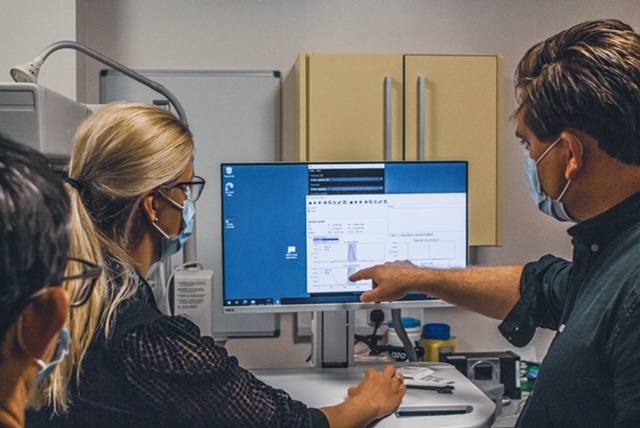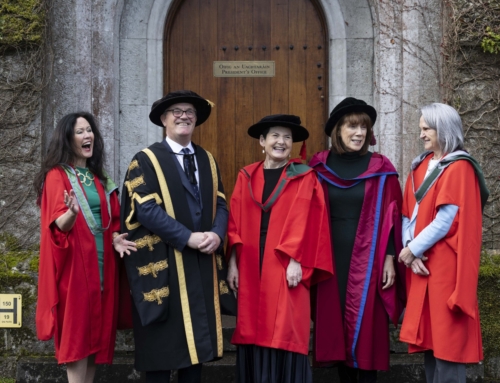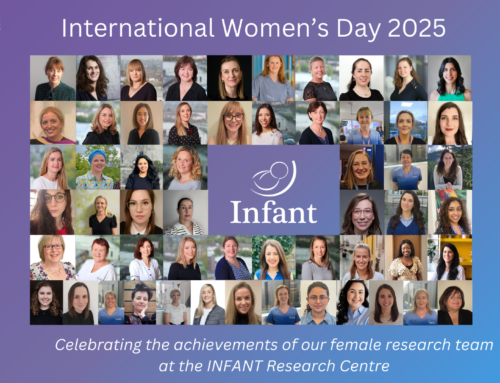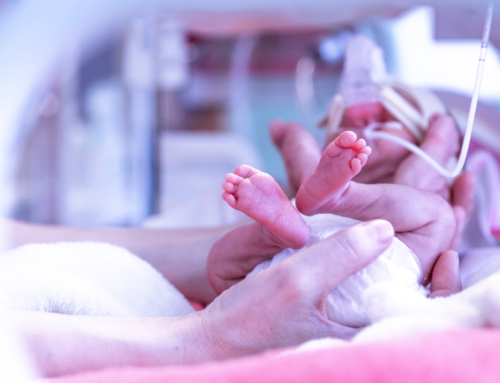Researchers at University College Cork’s INFANT Centre recently commenced a study of a new non-invasive optical device that may provide real-time information on the lung function of newborn babies.
By using light-emitting technology, this novel system incorporates sensors placed on a baby’s chest to detect oxygen levels in different regions of the baby’s lungs.
‘This system has the potential to significantly alter the way we monitor babies in the neonatal intensive care unit, especially preterm infants and term babies on mechanical ventilation’, according to Professor Eugene Dempsey, the Horgan Chair in Neonatology at UCC, Clinical Lead for Neonatal Research and Principal Investigator with the INFANT Research Centre. ‘Not only can we potentially monitor them more closely in real-time, but we can reduce X-ray exposure and limit blood tests being performed’ he added.
One month old, Elodie Fitton, was the first baby to take part in the study after her parents, Cora Shorten and Kieran Fitton, were approached to take part in the project called NIOMI (Non-Invasive lung Oxygen Monitoring of Infants).
‘We agreed to have Elodie take part as the first baby in this study. We believe as parents this study could help many of those sick and vulnerable babies in a situation where they need more care and monitoring’.
‘As this was a non-invasive study it made sense for Elodie and us to be able to give help by letting them monitor her for 30 minutes using light sensors. It’s great to see this research take place in our hospitals and Colleges to give the medical professionals the information they may need to treat these young infants’.
The technology called GASMAS or Gas in Scattering Media Absorption Spectroscopy, is based on diode laser measurements of oxygen content inside the lungs of babies. This study, which will be the first of its kind, is based on a sophisticated measurement scheme to enable measurements despite the high scattering of light in tissue.
In collaboration with the Biophotonics team at IPIC – the SFI Research Centre for Photonics hosted at Tyndall National Institute, and GPX Medical in Sweden, the INFANT Research Centre recently took delivery of the NEOnatal Lung Analyzer (NEOLA) and have trained staff on how to use it in a hospital setting.
Commenting on the technology, Professor Geraldine Boylan, Director of the INFANT Research Centre and Professor of Neonatal Physiology at UCC, said that “the NEOLA research system is an exciting development with the potential to have a huge impact on how preterm infants are managed in the neonatal intensive care unit in the future. We have an excellent clinical team at INFANT who embrace innovation and we are delighted to work with Tyndall National Institute and GPX Medical on this breakthrough technology”.
SFI Professor Stefan Andersson-Engels, Head of Biophotonics at Tyndall National Institute and Professor of Physics at UCC, explains “this novel technology is central to our research within the Biophotonics team at IPIC and is now entering the clinical study phase. We are very excited to collaborate in this tri-helix study with clinicians, industry and academia to assess the potential and further advance this technology. It is an excellent example of how multi-disciplinary research supported by Science Foundation Ireland can lead to ground-breaking Medtech innovations that can deliver real societal and economic impact”.
Parents of healthy newborn babies at CUMH will be invited to get involved in the research project called NIOMI (Non-Invasive lung Oxygen Monitoring of Infants). The research study aims to get more insights into this particular technology which has promising potential to benefit sick babies in the future.
Clinical Research Fellow, Jurate Panaviene, INFANT Research Centre
Phone: +353 85 132 4758
Email: jurate.panaviene@ucc.ie







